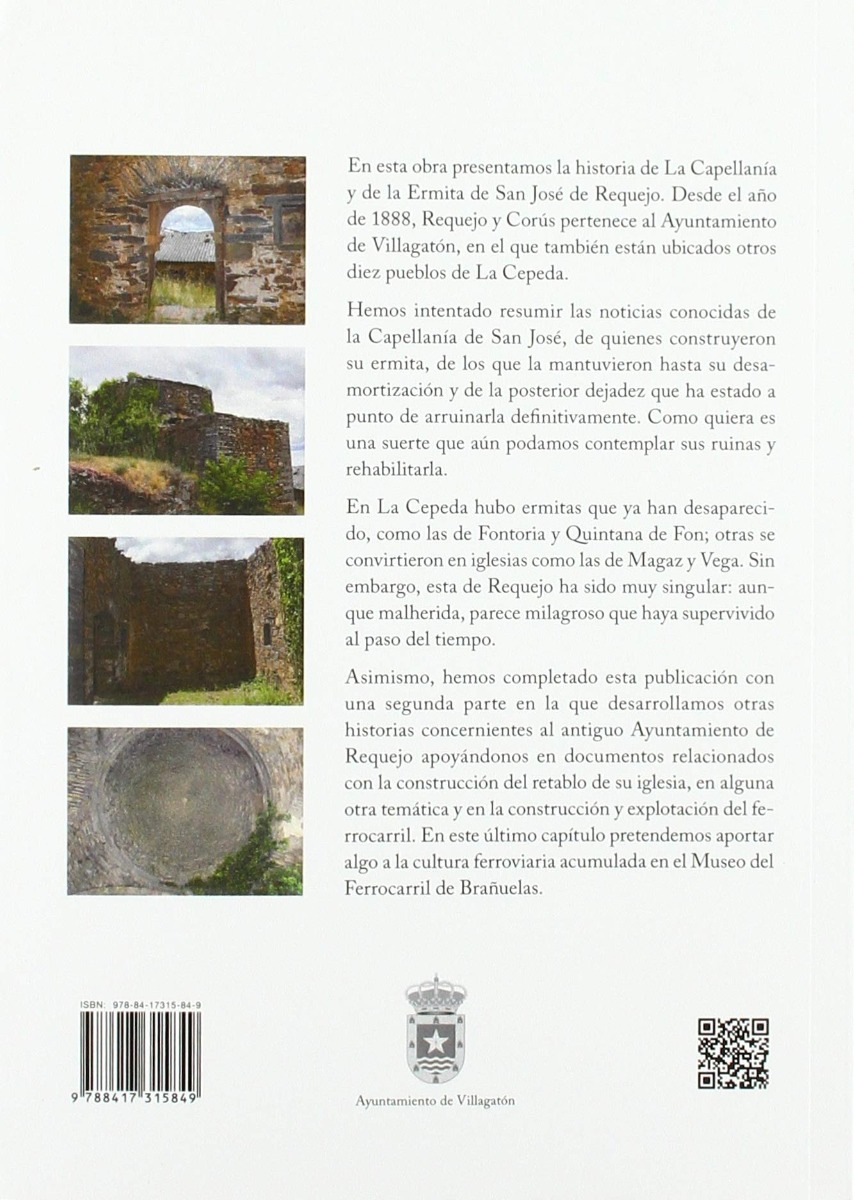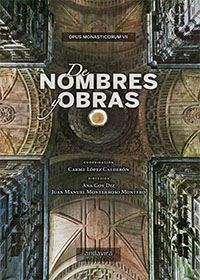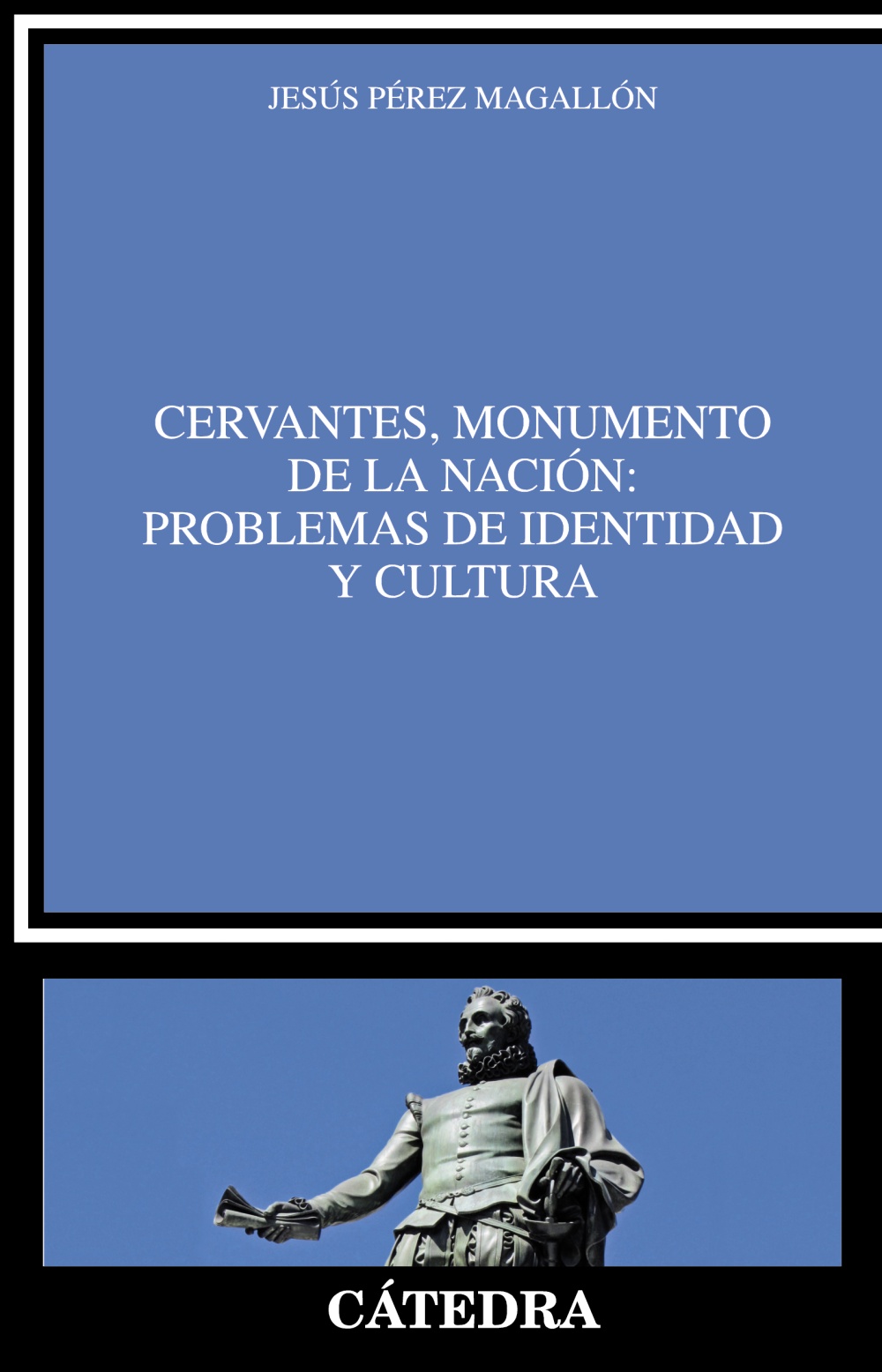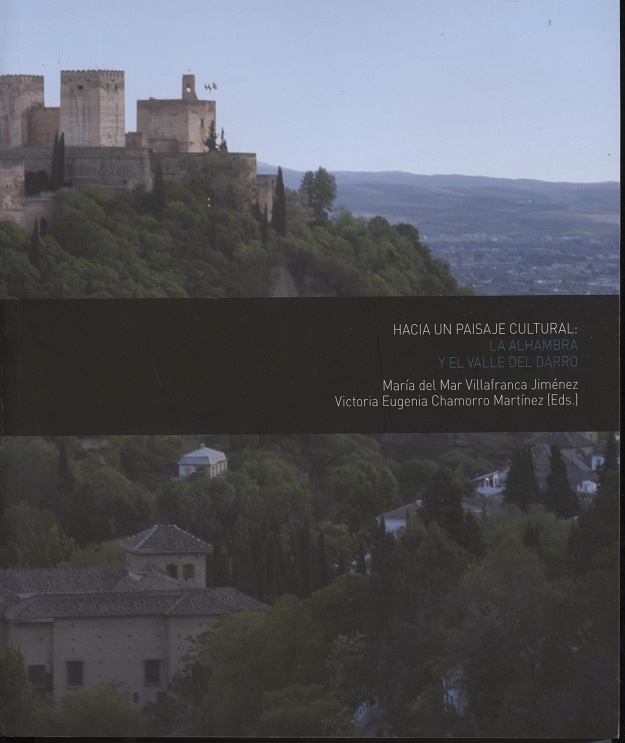En esta obra presentamos la historia de La Capellanía y de la Ermita de San José de Requejo. Desde el año de 1888, Requejo y Corús pertenece al Ayuntamiento de Villagatón, en el que también están ubicados otros diez pueblos de La Cepeda. Hemos intentado resumir las noticias conocidas de la Capellanía de San José, de quienes construyeron su ermita, de los que la mantuvieron hasta su desamortización y de la posterior dejadez que ha estado a punto de arruinarla definitivamente. Como quiera es una suerte que aún podamos contemplar sus ruinas y rehabilitarla. En La Cepeda hubo ermitas que ya han desaparecido, como las de Fontoria y Quintana de Fon; otras se convirtieron en iglesias como las de Magaz y Vega. Sin embargo, esta de Requejo ha sido muy singular: aunque malherida, parece milagroso que haya supervivido al paso del tiempo. Asimismo, hemos completado esta publicación con una segunda parte en la que desarrollamos otras historias concernientes al antiguo Ayuntamiento de Requejo apoyándonos en documentos relacionados con la construcción del retablo de su iglesia, en alguna otra temática y en la construcción y explotación del ferrocarril. En este último capítulo pretendemos aportar algo a la cultura ferroviaria acumulada en el Museo del Ferrocarril de Brañuelas.
Capellanía y la Ermita de San José de Resquejo y Corús
ISBN: 9788417315849
El precio original era: 12,00€.12,00€El precio actual es: 12,00€. 11,40€ IVA incluido
Solo quedan 15 disponibles (puede reservarse)
| Fecha de edición | 29/08/2019 |
|---|---|
| Número de Edición |
1 |
| Idioma | |
| Formato | |
| Páginas |
112 |
| Lugar de edición |
LEON |
| Colección |
MONOGRAFÍAS EOLAS |
| Encuadernación |
Introduction – Susan J. Brison and Katharine Gelber
Chapter 1: Digital Dualism and the ‘Speech as Thought’ Paradox – Katharine Gelber, Susan Brison
Chapter 2: Search Engines and Free Speech Coverage – Robert Simpson, Heather Whitney
Chapter 3: Cyber Harassment and Free Speech: Drawing the Line Online – James Weinstein
Chapter 4: Recipes, Plans, Instructions and the Free Speech Implications of Words that are tools – Frederick Schauer
Chapter 5: Free Speech Categories in the Digital Age – Ashutosh Bhagwat
Chapter 6: Privacy, Speech and Digital Imagination – Robert Post
Chapter 7: Why Combatting Online Abuse is Good for Free Expression – Danielle Keats Citron
Chapter 8: ‘Not Where Bodies Live’: The Abstraction of Internet Expression – Mary Anne Franks
Chapter 9: Demographics, Design and Free Speech: How Demographics have Produced Social Media Optimized for Abuse and the Silencing of Marginalized Voices – Soraya Chemaly
Chapter 10: Unmasking Hate on Twitter: Disrupting Anonymity by Tracking Trolls – Diana Ascher, Safiya Noble
Chapter 11: Online Dating Sites as Public Accommodations: Facilitating Racial Discrimination – Sonu Bedi
Chapter 12: The Meaning of Silence in Cyberspace: The Authority Problem and Online Hate Speech – Alexander Brown
Chapter 13: Regulating Online Speech: Keeping Humans, and Human Rights, at the Core – Dinah PoKempner
Edited by Susan J. Brison, Eunice and Julian Cohen Professor for the Study of Ethics and Human Values and Professor of Philosophy, Dartmouth College, and Katharine Gelber, Professor of Politics and Public Policy, University of Queensland
Susan J. Brison is Eunice and Julian Cohen Professor for the Study of Ethics and Human Values and Professor of Philosophy at Dartmouth College. Katharine Gelber is Professor of Politics and Public Policy at the University of Queensland and a Fellow of the Academy of Social Sciences Australia.
Contributors:
Diana L. Ascher
Sonu Bedi
Ashutosh Bhagwat
Susan J. Brison
Alexander Brown
Soraya Chemaly
Danielle Keats Citron
Mary Anne Franks
Katharine Gelber
Safiya Noble
Dinah PoKempner
Robert C. Post
Frederick Schauer
Robert M. Simpson
James Weinstein
Heather M. Whitney








